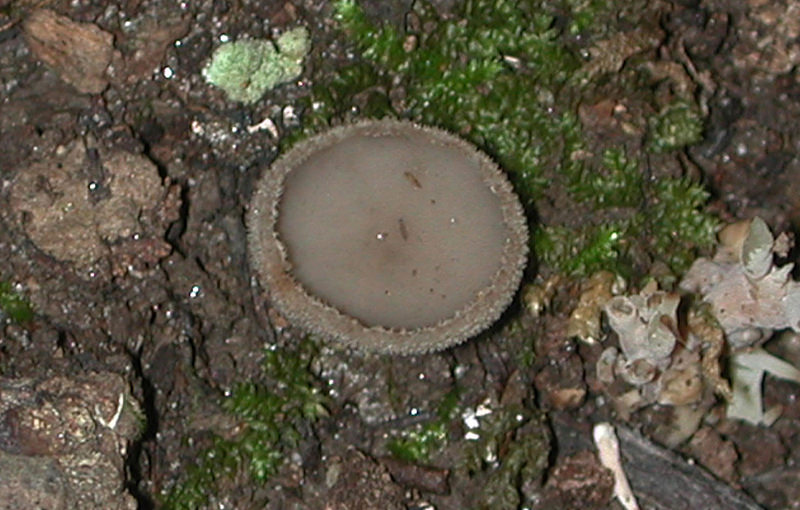Map Snapshot




14 Records
Status
On ground in hardwood and conifer forests (often in moss).
Description
Cap: Cup-shaped to almost flat, margin inrolled initially; gray to gray-brown; upper (infertile) surface smooth, lower (fertile) surface often lighter and may be densely downy. Stalk: Gray finely hairy, tapers up. (J. Solem, pers. comm.)
Seasonality Snapshot
Source: Wikipedia
| Helvella macropus | |
|---|---|

| |
| Scientific classification | |
| Domain: | Eukaryota |
| Kingdom: | Fungi |
| Division: | Ascomycota |
| Class: | Pezizomycetes |
| Order: | Pezizales |
| Family: | Helvellaceae |
| Genus: | Helvella |
| Species: | H. macropus
|
| Binomial name | |
| Helvella macropus | |
Helvella macropus is a species of fungus in the family Helvellaceae of the order Pezizales. Its ascocarps are found in summer and autumn in woodland, usually (though not exclusively) associated with broad-leaved trees.
Description
[edit]The slender stem, up to 4 millimetres (1⁄8 inch) thick and 5 centimetres (2 inches) long, supports a fuzz-covered and cup-shaped cap, usually compressed in one direction.[1] The whole fruiting body is pale grey or brown, with the smooth inner (hymenial) cup surface usually darker.[2][3] The stem may be bulbous at the base.[1]
Similar species
[edit]Similar species include H. corium, H. cupuliformis, H. fibrosa, H. pezizoides, H. queleti, and Donadinia nigrella.[1]
Distribution
[edit]This species has a wide distribution in the Northern Hemisphere, having been recorded throughout North America,[1] as well as in Central America, Europe, China,[4] and Japan.[5] It can be found on the ground or on rotting wood along with moss.[1]
Toxicity
[edit]The species is inedible.[6]
References
[edit]- ^ a b c d e Audubon (2023). Mushrooms of North America. Knopf. p. 29. ISBN 978-0-593-31998-7.
- ^ Jordan, Michael (2004). The Encyclopedia of Fungi of Britain and Europe. Frances Lincoln Publishers. p. 54. ISBN 978-0-7112-2379-0.
- ^ Buczacki, Stefan (1992). Collins Guide to Mushrooms and Toadstools of Britain and Europe. HarperCollins. p. 217. ISBN 0-00-219978-5.
- ^ Zhuang WY. (2004). "Preliminary survey of the Helvellaceae from Xinjiang, China". Mycotaxon. 90 (1): 35–42.
- ^ Nagao H. (2002). "Fungal flora in Chiba Pref., central Japan (III) Ascomycetes: Plectomycetes and Discomycetes". Journal of the Natural History Museum and Institute Chiba (in Japanese). 5: 111–32.
- ^ Phillips, Roger (2010). Mushrooms and Other Fungi of North America. Buffalo, NY: Firefly Books. p. 367. ISBN 978-1-55407-651-2.
External links
[edit]![]() Media related to Helvella macropus at Wikimedia Commons
Media related to Helvella macropus at Wikimedia Commons












